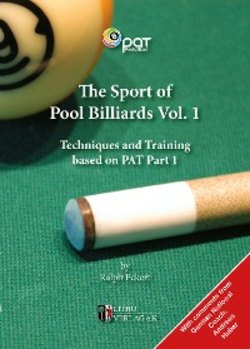Читать книгу The Sport of Pool Billiards 1 - Ralph Eckert - Страница 30
Оглавление30
Training program
automatically jump when it hits the first rail. However, interna-tional table rules state that a ball must be able to run 4 table‘s lengths before it jumps.
Now you‘ve done the exercises you should be able to see whether you had any problems playing these speeds or not. At this point, though, we shouldn‘t be worrying about straight-ness. Straightness will be dealt with in the next session. The problem of finding the right speed is usually a question of the right swinging frequency! Where does the strength needed for a clean Speed 4 or higher come from? The upper arm? The forearm? Muscle power? No, it comes from the speed of the cue movement itself. In order to achieve a high speed you have to learn to move the cue „fast“. And to do this, you need to accelerate with the cue. Before you actually contact the ball you should do a few practice swings. I have often had pupils who would have gladly left these practice swings out, or who did them very slowly, quickly or cautiously. But if you do not do any practice swings beforehand, or not enough, then you‘ll generally never be able to get any real acceleration with the shot. The shot usually turns out to be a bit hacked off and rough.
If you swing too slowly, you‘ll find it difficult to hit the cue ball quickly and won‘t be able to achieve the high speeds. On the other hand, if you swing your cue too hastily, too impetuously, you‘ll have problems with the slower speeds! The best thing to do is accustom yourself to an average swinging speed and then you‘ll be able to master all the speeds!
You may be asking yourself how many practice swings are recommended before actually hitting the cue ball. There isn‘t really a simple answer to this. My advice is simply to swing
